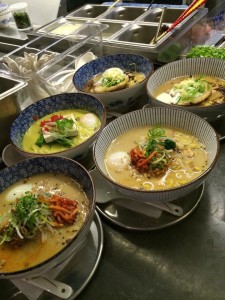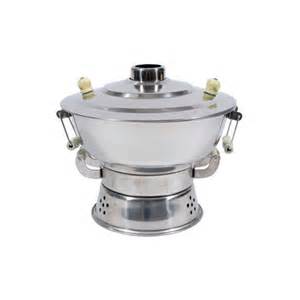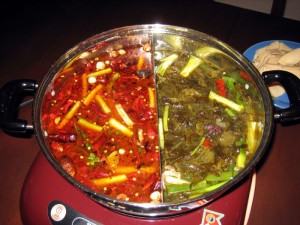Food, Mostly Hot Pot
Carol is allergic to any food containing cow dairy products. It is like she has been poisoned. With my ADD, foods containing gluten tend to make me irritable, as gluten is a precursor for glutamine, a neurotransmitter ADD’s have too much of. It is always a bit of an adventure when we go to a restaurant.
The upshot is we are fairly aware of the dietary requirements many people have these days. Entertaining is a challenge, preparing vegetarian, vegan, gluten free, dairy free, organic, free range, sugar free, low salt, on and on. Maybe hosts should just serve organic oatmeal with rice milk and be done with it.
Carol belongs to a cookbook book club at the library. That means interesting and sometimes weird food and cooking techniques. Currently we are engaged in a ramen quest. Previously we had never been to a ramen restaurant. So far every one has been an adventure, with different ingredients and sauces. Denver is such a great town for exploring cuisines. By the way, the ramen is only distantly related to those ramen packets you ate in your impoverished youth.
I like ramen so much we acquired a Japanese Hot Pot to do ramen and other hot pot dishes at home. Years ago I liked to cook Mongolian Hot Pot meals for friends. The Mongolian hot pot for heating the broth was a charcoal burner, and I always worried about carbon monoxide. Our new hot pot is electric, not exactly traditional, but safe and controllable. I am just learning what to do. The pot has a divider in it, so it an heat two kinds of broth.
When we think of Japanese food it is usually sushi or teriyaki. Typical Japanese at home food is usually from the hot pot. Broth, vegetables, noodles or rice, maybe some meat, and family. The broth is either a simple meat broth or dried seaweed with some dashi for umami.
I have cooked two meals so far with the hot pot. Both went pretty well. We have two cookbooks, but they aren’t really necessary. You heat some broth, throw your veggies, meat, tofu, mushrooms, dumplings, and anything else in the pot, let it cook, and fish it out with the little baskets on a handle that come with the pot.
You have two choices for the noodles. Cook them separately and put the stuff from the pot on then and eat, or cook them in the broth after you are finished with the meat and veggies and have noodle soup for the last course. The kind of noodle is up to you. Ramen, or any other variety is fine. Wheat, rice, buckwheat, or corn noodles are fine. You can also put your stuff on cooked rice, preferably short grain sticky rice so you can use chopsticks.
Have condiments on the side. Condiments can be soy sauce, hot mustard, wasabi, srirachi sauce, or anything else. I get the sense that every Japanese household has its own way of doing hot pot. It is a fun way to eat, and keeps you at the table instead of in front of the TV.



